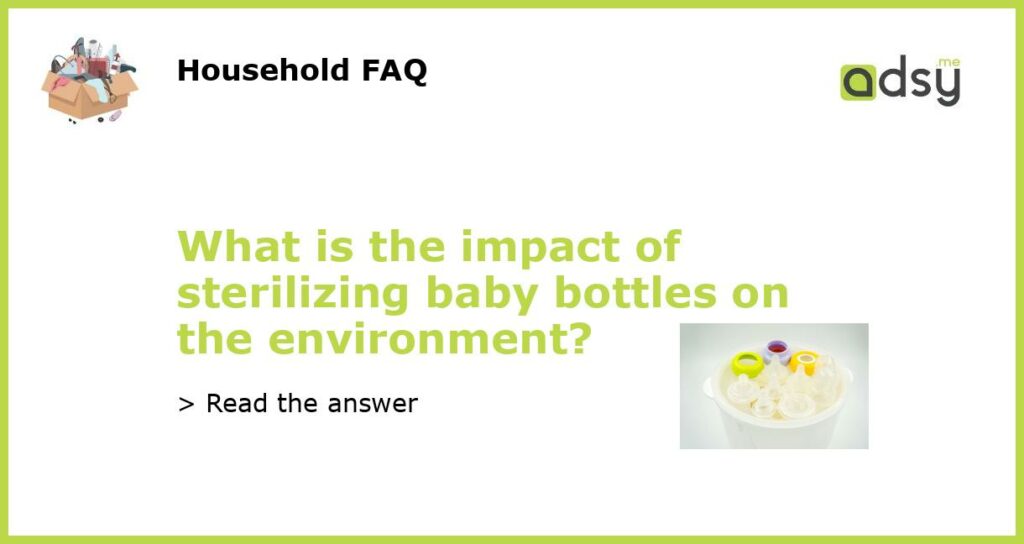The Importance of Sterilizing Baby Bottles
Parents have long understood the importance of ensuring that their baby’s bottles are perfectly clean to prevent infections, but many of them do not realize the impact that sterilization has on the environment. Sterilizing bottles requires energy and water, so its environmental impact is not negligible. However, to understand the precise impact of sterilizing baby bottles, we need to look more closely at the different methods available to parents.
The Environmental Impact of Boiling Baby Bottles
Boiling is the most common method used by parents to sterilize their baby bottles. It is both cheap and easy to do, but it has a significant impact on the environment. Boiling requires energy to heat the water, which can be a significant source of greenhouse gas emissions. Additionally, it cannot be done without water, which adds to the overall environmental impact of sterilization. However, parents who prefer this method can reduce their impact on the environment by boiling only the bottles they need for that day, instead of sterilizing the entire batch.
The Environmental Impact of Using a Microwave Sterilizer
Microwave sterilizers have gained popularity in recent years among parents who want a more efficient and convenient method of sterilizing their baby bottles. Microwave sterilizers use steam to kill bacteria and viruses, and they are quick and easy to use. However, they also require energy to power the microwave, and they use water to create the steam, which adds to their environmental impact. Nevertheless, they are still a better option than boiling water on a stove since they use less water and are less time-consuming.
The Environmental Impact of Using a UV Sterilizer
UV sterilizers are an eco-friendly option for parents who want to sterilize their baby’s bottles without negatively impacting the environment. These sterilizers use ultraviolet light to kill bacteria and viruses, which means they require no energy or water to work. Additionally, they are easy to use, and they are more effective than boiling or microwave sterilization. UV sterilizers are more expensive than other types of sterilizers, but they pay off in the long run through their eco-friendliness and convenience.
The Bottom Line
In conclusion, sterilizing baby bottles is essential for preventing infections, but this practice also has a significant impact on the environment. Parents who are concerned about their impact on the planet can choose from different sterilization methods. While boiling and using a microwave sterilizer have a more significant impact than UV sterilizers, they are still better options than not sterilizing at all. For eco-conscious parents who want to minimize their impact on the planet, UV sterilizers are the best choice since they have zero environmental impact.






